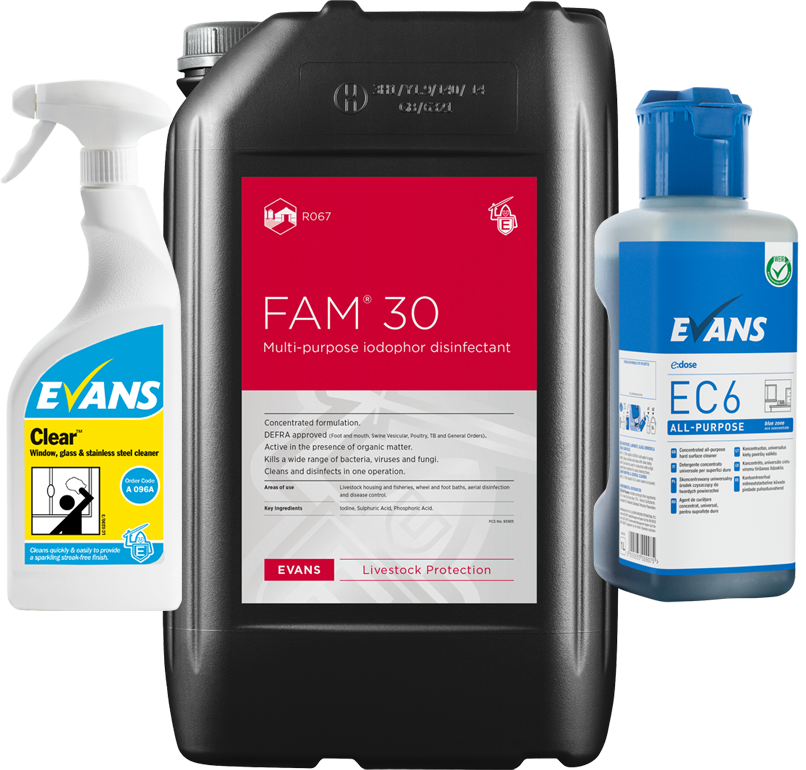11 July 2023
Biosecurity is the prevention of transmission of pathogens through effective cleaning and disinfection techniques. The protocols associated with Biosecurity programmes originated in the food industry with HACCP (Hazard Analysis and Critical Control Point). There are seven basic principles that are employed in the development of HACCP, these include hazard analysis, Critical Control Point (CCP) identification, establishing critical limits, monitoring procedures, corrective actions, verification procedures, and record-keeping and documentation.
These principles have been transferred to the livestock industry to enable an integrated approach to protecting livestock against infection. The key focus is on preventing disease by controlling potential contamination areas.
An effective biosecurity program is essential as it will ensure a more profitable farm leading to:
• Better livestock health• Better feed conversion
• Lower medical costs
• Improved yield
• Higher quality food for the customer
A Biosecurity programme is designed to control micro-organism transmission into and across the farm from both external and internal sources. The transmission can be broken down into three main vectors:
Static – Always present in the farm environment and in the livestock housing - often not pathogenic, so livestock have a level of immunity.
Mobile – Contamination, either brought into the farm from outside or spread from one area inside the farm to another area.
Nutrient – Brought into the farm by food or nutrient contamination.
A key element of Biosecurity is the identification of Critical Control Points; the point at which contamination can occur. These can be identified as follows:
• Entry control – personnel, supplies and vehicles• Import of livestock on to the farm
• Feed and nutrition
• External and internal water supply
• Equipment and maintenance
• Dispatch and waste management
• Cleaning and disinfection
• Pest control
To mitigate the risks associated with each CCP, it is important to devise a strategy for each. This then needs to be documented, all farm personnel trained on its implementation and monitored regularly to ensure all procedures are followed.
For example, to mitigate the risks associated with entry control, we recommend the use of FAM30 in wheel dips to ensure all vehicles who enter your environment are disinfected to prevent the spread of disease. In the case of boots, micro-organisms, which can cause disease may be present in organic matter, so we recommend cleaning boots with Evans Shift followed by dipping and disinfecting in FAM30.














